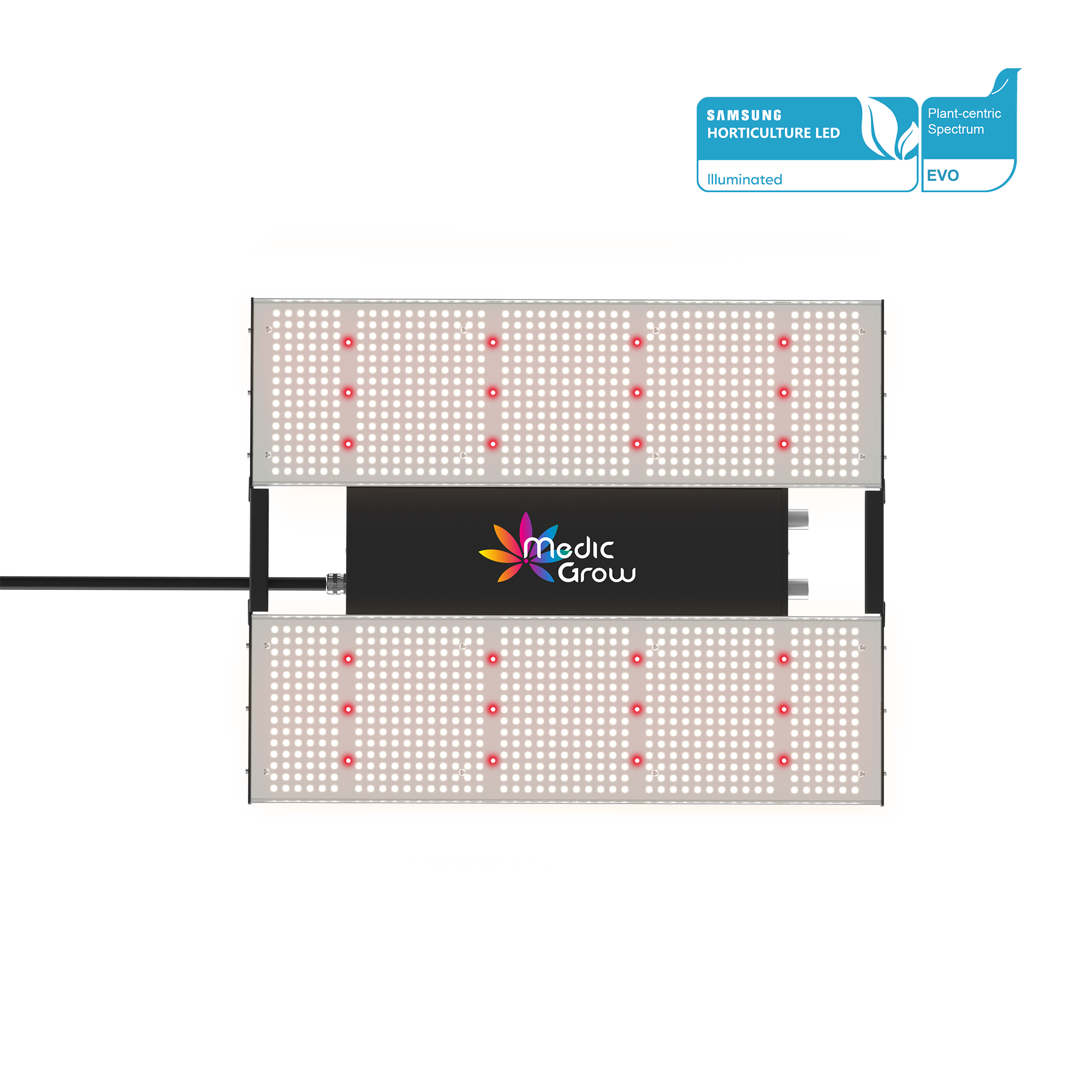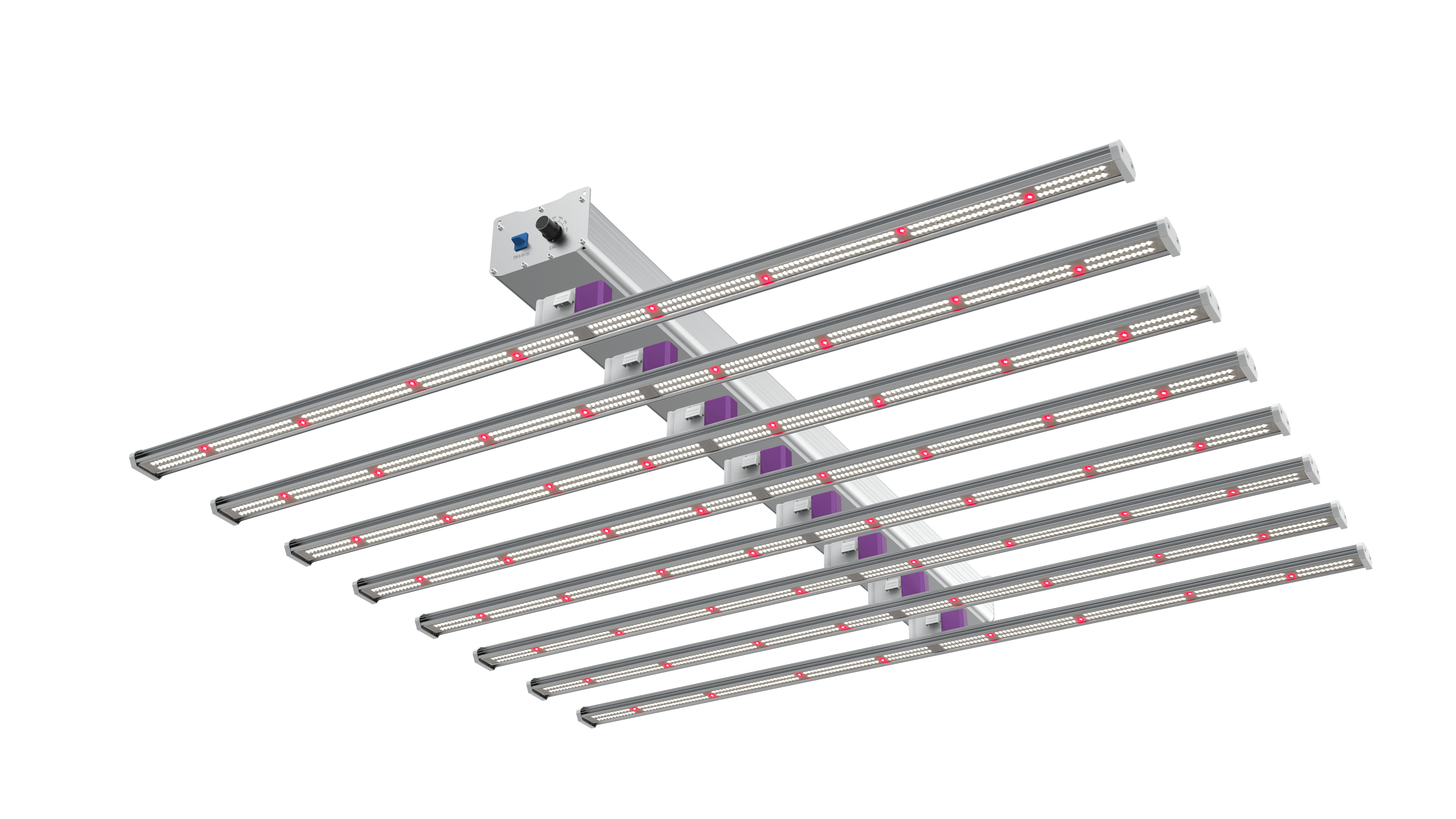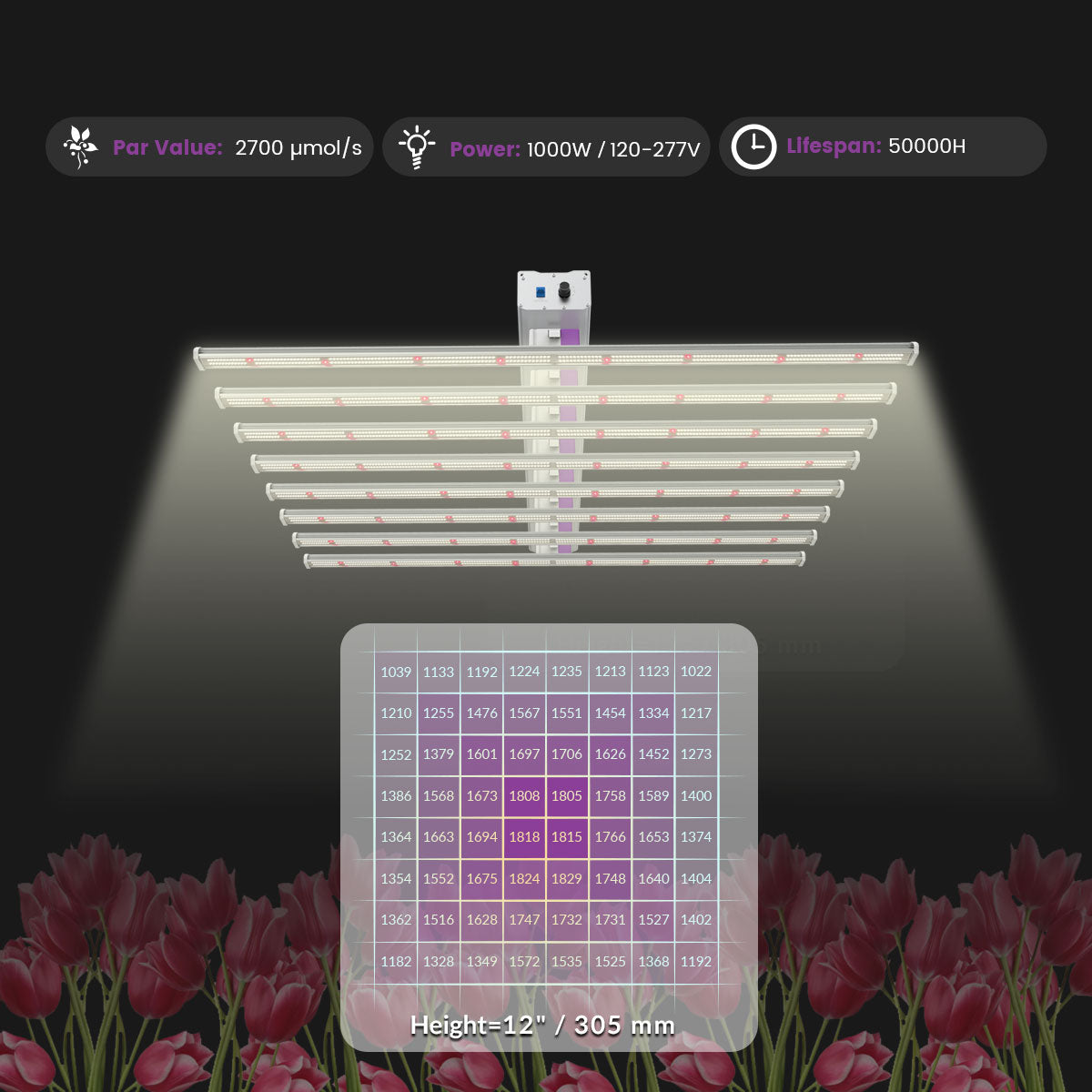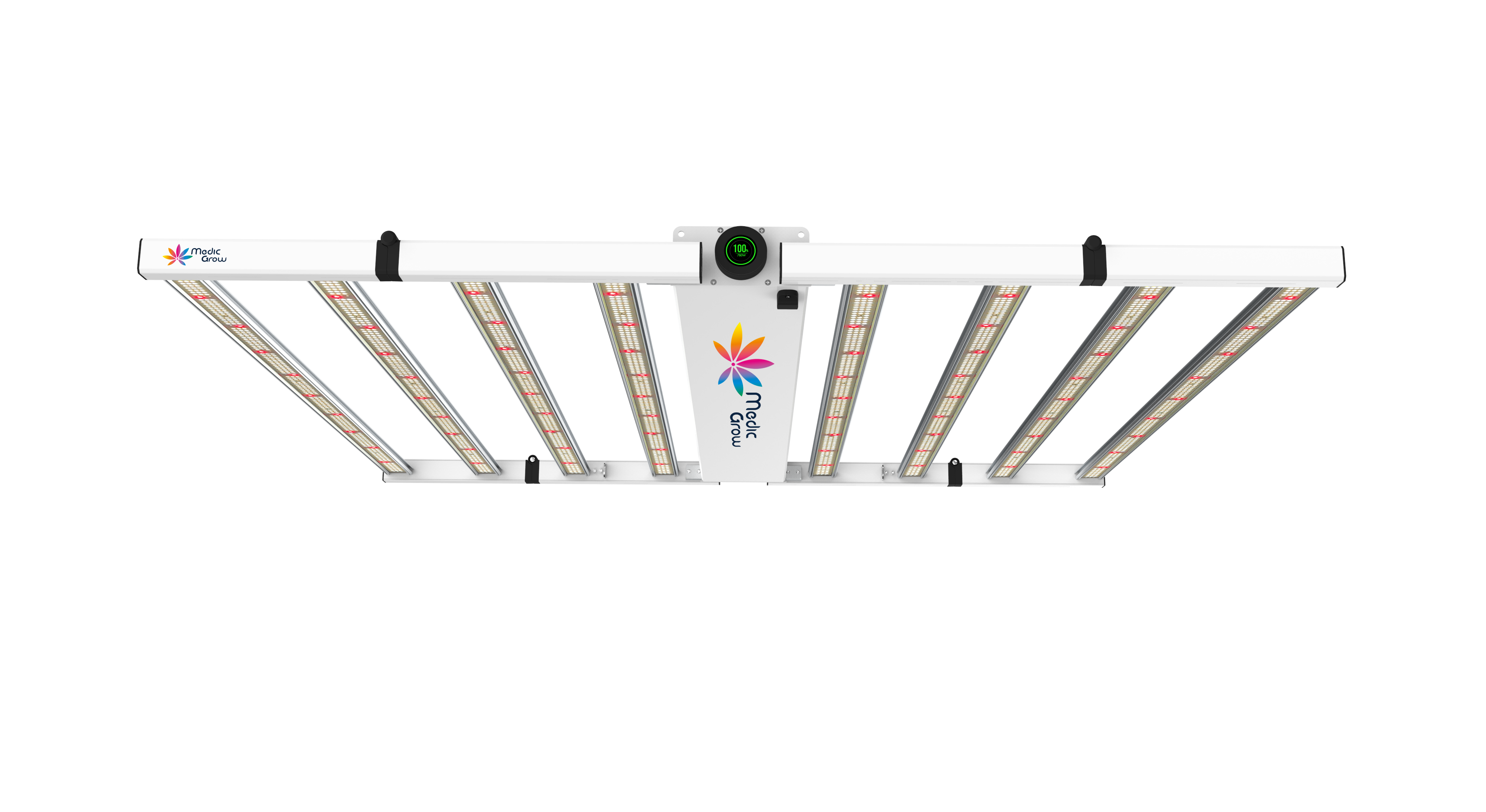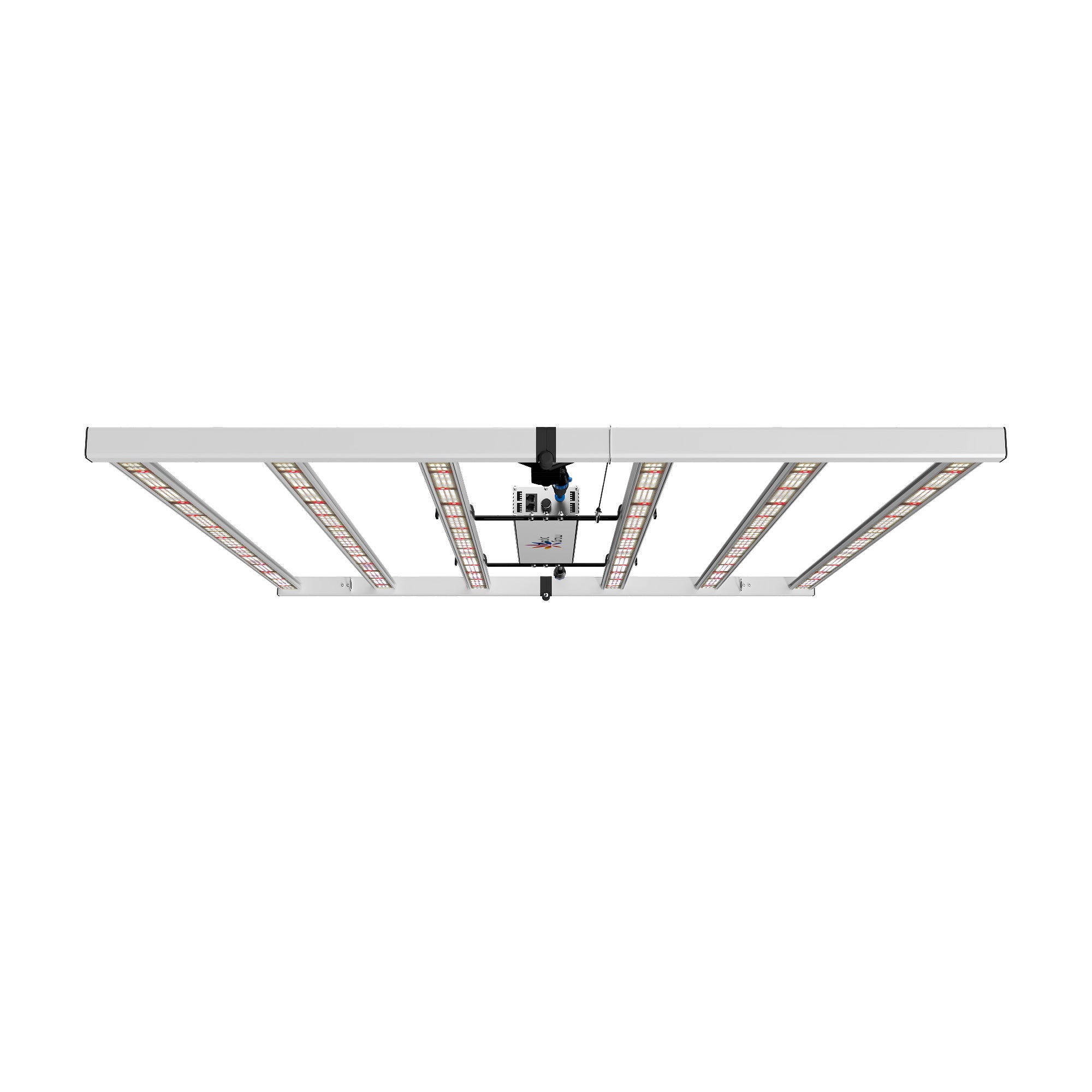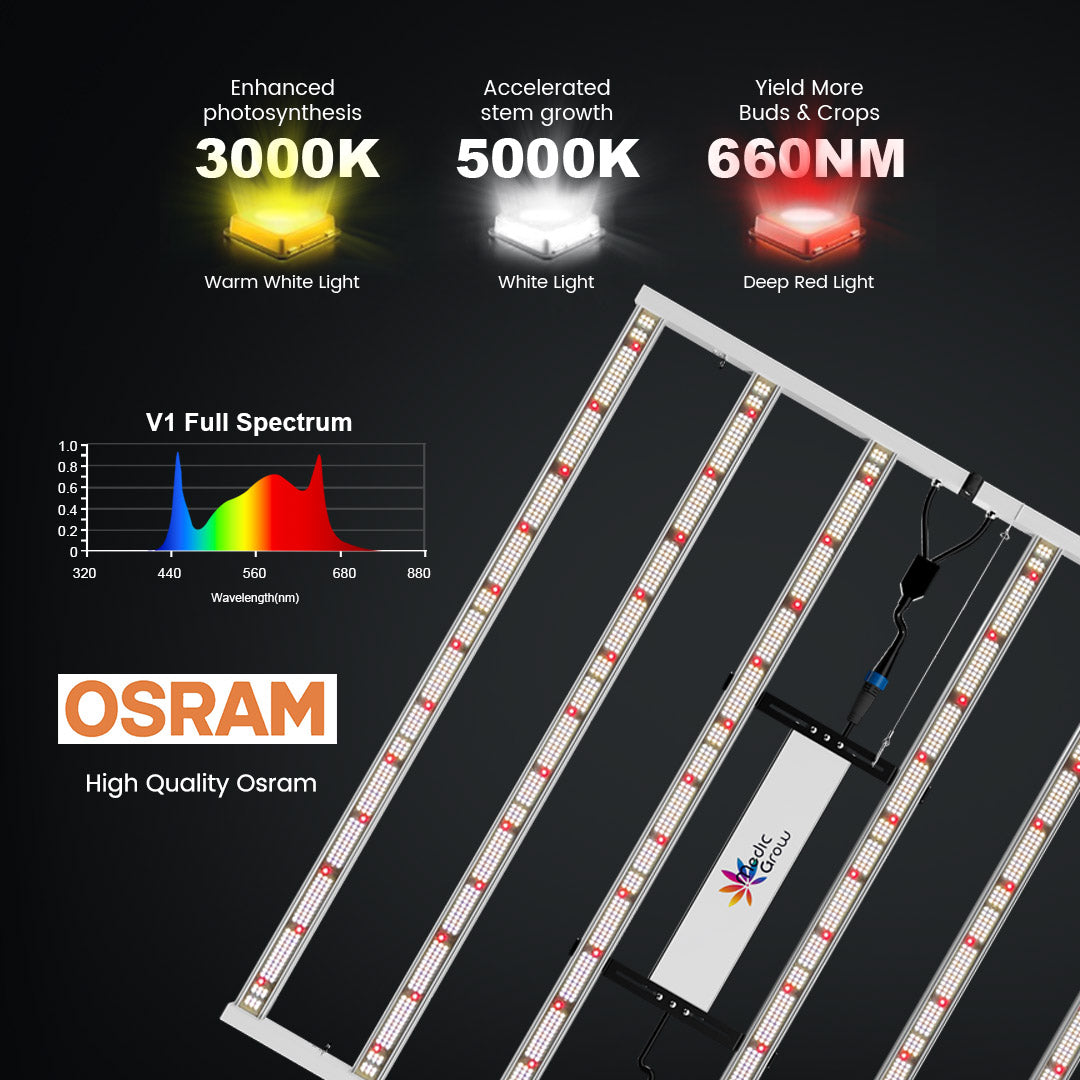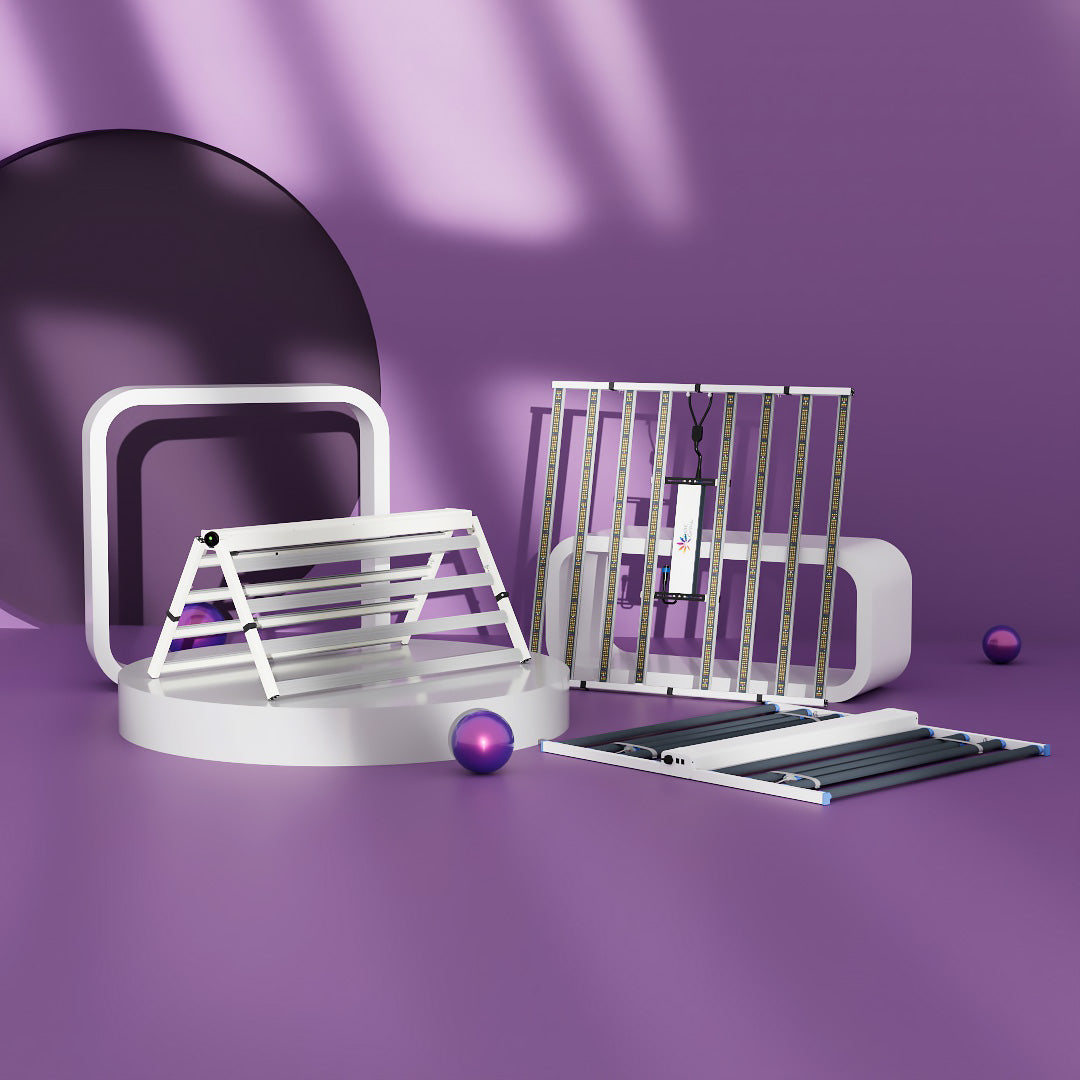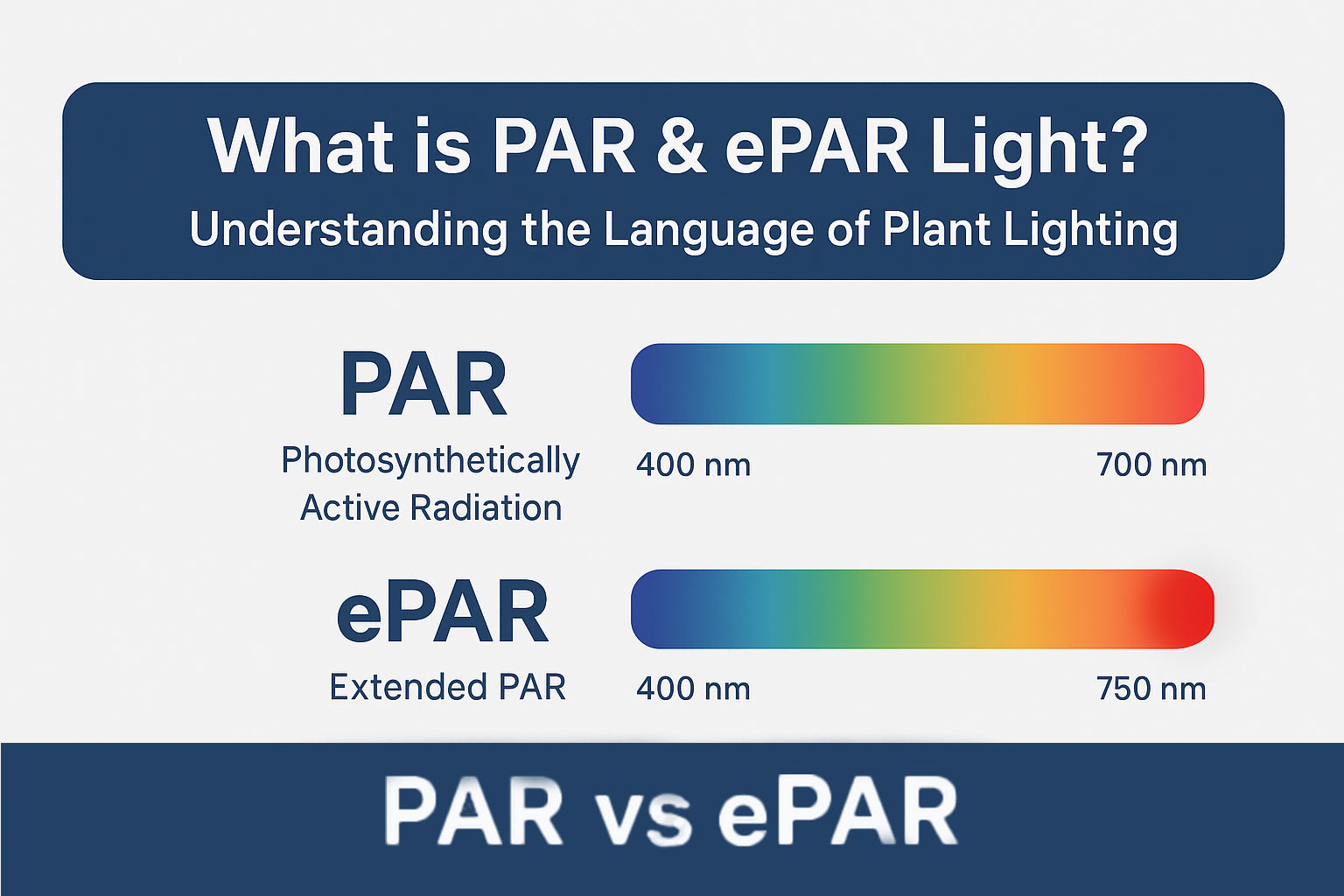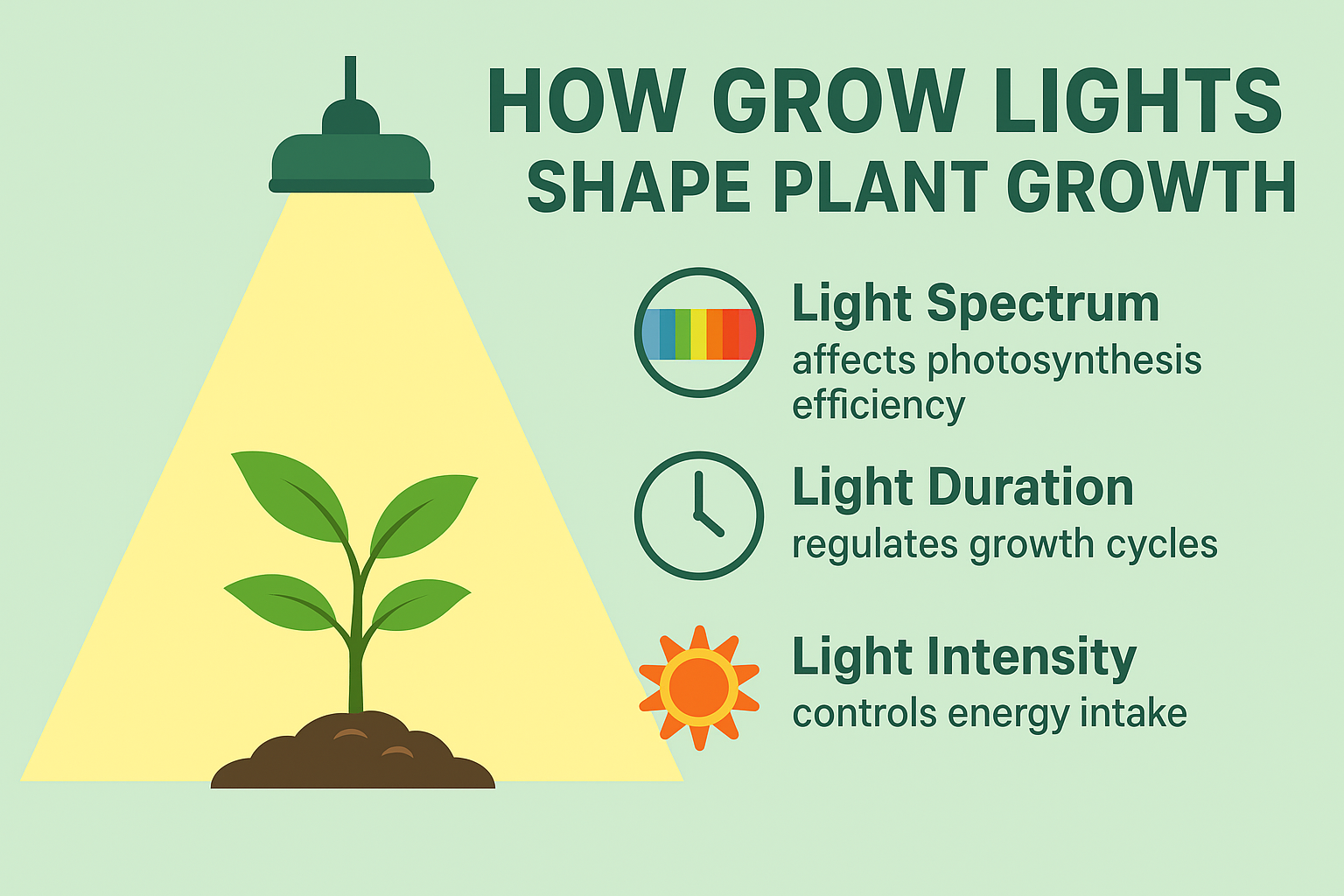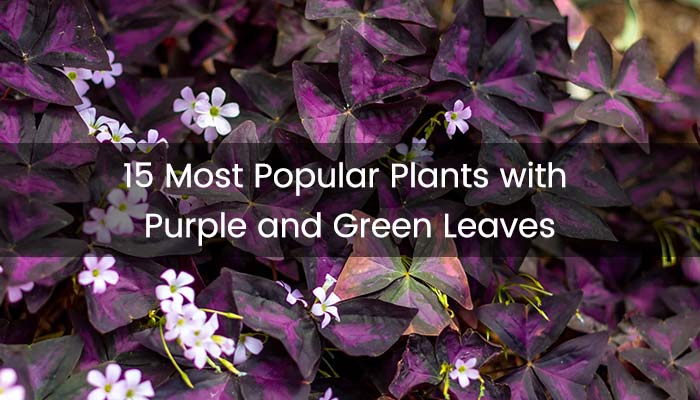
15 Most Popular Plants with Purple and Green Leaves
Looking to add a pop of color to your home? Plants with Purple and Green Leaves are an excellent choice to bring a touch of elegance and vibrancy to your space.
However, there are many types of purple and green plants, ranging from succulents to tropical varieties. They come in different shapes and sizes, each with unique care requirements.
In this article, we introduce 15 of the most popular green leafy plants with purple upper leaves. From their distinct appearances to growing tips, we’ll help you find the perfect purple and green plant for your home.
Persian Shield (Strobilanthes dyerianus)
Known for its iridescent purple leaves with green undertones, the Persian Shield is a tropical beauty. Its shimmering foliage makes it a favorite in gardens and containers, thriving in partial shade and warm, humid environments.
- USDA Zone: 9-11
- Flower Color: Violet
- Light: Partial to full shade
- DLI: 10-15 mol/m²/day
- Soil Needs: Use well-drained soil, such as a peat mix, with a slightly acidic to neutral pH (6.0-7.0).
- Water: Keep consistently moist but not soggy
- TEMP: Suitable temperatures are 18°C-29°C (65°F-85°F), not hardy
- Nutrition: Apply a balanced liquid fertilizer once a month during the growing season (spring and summer) and less frequently in the fall and winter
- Mature Size: 3-4 ft tall, 2-3 ft wide
- Care Tips: Avoid direct sunlight; prune to maintain bushy growth; Avoid root rot and mold infections caused by overwatering.

Purple Heart (Tradescantia pallida)
This striking plant has deep purple leaves with hints of green and produces small pink flowers. It’s a tough, low-maintenance choice for hanging baskets or ground cover in warmer climates.
- USDA Zone: 7-11
- Flower Color: Pink
- Light: Full sun to partial shade
- DLI: 12-20 mol/m²/day, 150W LED grow light for indoor plants
- Soil Needs: Use well-drained soil, such as a mixture of peaty and sandy soils, with a neutral to slightly acidic pH (6.0-7.0).
- Water: Moderate; allow the soil to dry slightly between waterings
- TEMP: Optimum temperatures are 18°C-24°C (65°F-75°F), frost intolerant.
- Nutrition: Apply diluted general-purpose liquid fertilizer every 2 weeks during the growing season and stop fertilizing in the fall and winter.
- Mature Size: 12-18 inches tall, 18-24 inches wide
- Care Tips: Trim regularly to prevent legginess and avoid overwatering.

Wandering Jew (Tradescantia zebrina)
Recognized by its purple and green striped leaves, this plant is native to tropical America and perfect for adding a splash of color to indoor or outdoor spaces. It thrives in indirect light and is a popular choice for trailing in pots or hanging baskets.
- USDA Zone: 9-11
- Flower Color: Purple or white
- Light: Indirect light or partial shade
- DLI: 8-15 mol/m²/day
- Soil Needs: Well-drained potting soil with a neutral to slightly acidic pH (6.0-7.0).
- Water: Keep soil evenly moist, avoid overwatering
- TEMP: Optimal growing temperature is 15°C-24°C (59°F-75°F), not hardy.
- Nutrition: Feed bi-monthly with a diluted liquid fertilizer
- Mature Size: 6-12 inches tall, 12-24 inches wide
- Care Tips: Rotate and prune the plant regularly for even growth; pinch back stems for fullness.

Purple Shamrock (Oxalis triangularis)
With its triangular, deep purple leaves and delicate green highlights, the Purple Shamrock is both elegant and easy to grow. It produces small white or pale pink flowers and adds a whimsical touch to any garden or indoor space.
- USDA Zone: 6-10
- Flower Color: White or pale pink
- Light: Bright, indirect light
- DLI: 10-18 mol/m²/day
- Soil Needs: Well-draining, slightly acidic soil
- Water: Allow the top inch of soil to dry before watering
- Nutrition: Monthly feeding with a balanced fertilizer during active growth
- Mature Size: 6-12 inches tall and wide
- Care Tips: Provide dormancy periods by reducing water and light during winter.

Coleus (Plectranthus scutellarioides)
There are over 300 coleus varieties with vibrant foliage in various colors and patterns. Many feature purple leaves accented by green, red, or pink hues. For predominantly purple and green varieties, try ColorBlaze Wicked Witch, Wizard Mosaic, or El Brighto.
- USDA Zone: 10-11
- Flower Color: Blue or lavender (not showy)
- Light: Partial shade to full sun
- DLI: 12-20 mol/m²/day
- Soil Needs: Moist, rich, and well-draining soil
- Water: Regular watering to keep the soil consistently moist
- Nutrition: Use a balanced, water-soluble fertilizer every 2-4 weeks
- Mature Size: 1-3 ft tall, 1-2 ft wide
- Care Tips: Pinch off flowers to encourage vibrant foliage growth.

Ti Plant (Cordyline fruticosa)
The Ti Plant boasts dramatic purple leaves with green streaks, creating a tropical vibe. Often used as a statement plant in landscapes or large pots, it’s a versatile and eye-catching option.
- USDA Zone: 9-12
- Flower Color: Pink or red
- Light: Bright, indirect light
- DLI: 10-16 mol/m²/day
- Soil Needs: Well-draining, slightly acidic soil
- Water: Moderate; let the top inch dry out before watering
- Nutrition: Feed monthly with a tropical plant fertilizer
- Mature Size: 3-10 ft tall, 3-4 ft wide
- Care Tips: Avoid cold drafts and water with non-chlorinated water.

Red-Leaf Alternanthera (Alternanthera ficoidea)
This compact plant features rich purple foliage with green edges. It’s perfect for borders or container gardening and thrives in full sun to partial shade.
- USDA Zone: 9-11
- Flower Color: Insignificant
- Light: Full sun to partial shade
- DLI: 12-20 mol/m²/day
- Soil Needs: Well-draining, rich soil
- Water: Keep soil consistently moist but not soggy
- Nutrition: Apply liquid fertilizer monthly during growth
- Mature Size: 6-12 inches tall, 12-18 inches wide
- Care Tips: Pinch tips for bushier growth and maintain consistent moisture.

Purple Basil (Ocimum basilicum var. purpurascens)
With aromatic purple leaves tinged with green, this culinary herb is as ornamental as it is useful. Varieties like Dark Opal and Amethyst Improved are favorites for their stunning foliage and robust flavor.
- USDA Zone: 9-11
- Flower Color: Purple or white
- Light: Full sun to partial shade
- DLI: 12-18 mol/m²/day
- Soil Needs: Well-draining, fertile, slightly acidic to neutral soil
- Water: Moderate; keep soil evenly moist but not waterlogged
- Nutrition: Feed every 4 weeks with a balanced liquid fertilizer
- Mature Size: 12-18 inches tall, 12 inches wide
- Care Tips: Pinch flowers to encourage foliage growth and prevent bitterness.

Heuchera (Heuchera spp.)
Commonly called coral bells, Heuchera varieties like Plum Pudding and Forever Purple display deep purple leaves with subtle green veining. These perennials are great for adding texture to shaded garden areas.
- USDA Zone: 4-9
- Flower Color: White, pink, or coral (depends on variety)
- Light: Partial shade to full shade
- DLI: 10-15 mol/m²/day
- Soil Needs: Moist, well-draining soil rich in organic matter
- Water: Moderate; avoid letting the soil dry out completely
- Nutrition: Fertilize in spring with slow-release, balanced fertilizer
- Mature Size: 12-24 inches tall, 18 inches wide
- Care Tips: Mulch around the plant to retain moisture and protect roots from extreme temperatures.

Caladium (Caladium bicolor)
Certain caladium varieties, such as Florida Sweetheart and Rosebud, feature heart-shaped leaves with purple centers and green edges. They thrive in shaded areas, making them ideal for woodland gardens.
- USDA Zone: 9-11 (grown as annuals in cooler zones)
- Flower Color: Insignificant
- Light: Partial shade to full shade
- DLI: 8-12 mol/m²/day
- Soil Needs: Moist, well-draining, slightly acidic soil
- Water: Keep soil consistently moist but not soggy
- Nutrition: Feed bi-weekly with a diluted liquid fertilizer during active growth
- Mature Size: 12-30 inches tall, 12-24 inches wide
- Care Tips: Avoid overwatering; remove tubers in cold climates for storage during winter.

Aeonium ‘Zwartkop’
This succulent has deep purple rosettes with green centers, resembling a lotus flower. It’s drought-tolerant and makes a striking addition to xeriscape gardens or container displays.
- USDA Zone: 9-11
- Flower Color: Yellow
- Light: Full sun to partial shade
- DLI: 14-18 mol/m²/day
- Soil Needs: Well-draining sandy or cactus mix soil
- Water: Low; allow soil to dry completely between waterings
- Nutrition: Fertilize sparingly with a cactus fertilizer during growing season
- Mature Size: 12-24 inches tall, 8-12 inches wide
- Care Tips: Protect from frost and excessive rain; ensure good airflow to prevent rot.

Rex Begonia (Begonia rex-cultorum)
Known for its dramatic foliage, Rex Begonia varieties like Escargot and Black Fancy boast swirling purple leaves edged with green. They thrive indoors or in shaded garden areas.
- USDA Zone: 10-11 (indoor plant in cooler zones)
- Flower Color: Pink or white (often insignificant)
- Light: Bright, indirect light
- DLI: 10-14 mol/m²/day
- Soil Needs: Well-draining potting mix with peat moss and perlite
- Water: Moderate; let the top inch of soil dry before watering
- Nutrition: Feed monthly with a diluted houseplant fertilizer
- Mature Size: 12-18 inches tall, 12-18 inches wide
- Care Tips: Avoid direct sunlight and overwatering to prevent leaf scorch and root rot.

Polka Dot Plant (Hypoestes phyllostachya)
This playful plant has speckled leaves in purple, green, and pink varieties. It’s an excellent choice for indoor gardening, thriving in indirect light with regular watering.
- USDA Zone: 10-11 (grown as annuals or houseplants in cooler zones)
- Flower Color: Lilac or purple (often insignificant)
- Light: Bright, indirect light
- DLI: 8-12 mol/m²/day
- Soil Needs: Well-draining potting mix
- Water: Moderate; keep soil evenly moist but not soggy
- Nutrition: Feed every 2-3 weeks with a balanced liquid fertilizer
- Mature Size: 12-18 inches tall, 12 inches wide
- Care Tips: Pinch back stems to prevent legginess and promote bushy growth.

Alternanthera ‘Purple Prince’
This annual plant features lush purple foliage with a touch of green at the edges. It’s a fast grower that adds depth to borders, containers, or as ground cover in sunny spots.
- USDA Zone: 9-11
- Flower Color: Insignificant
- Light: Full sun to partial shade
- DLI: 12-18 mol/m²/day
- Soil Needs: Well-draining, fertile soil
- Water: Keep soil evenly moist during active growth
- Nutrition: Apply a balanced fertilizer every 4-6 weeks
- Mature Size: 12-18 inches tall, 18 inches wide
- Care Tips: Trim regularly to maintain shape and encourage new growth.

Setcreasea ‘Purple Queen’
This hardy perennial has bold purple leaves with a subtle green undertone. Often used as ground cover or in hanging baskets, it thrives in sunny areas and requires minimal maintenance.
- USDA Zone: 8-11
- Flower Color: Pink
- Light: Full sun to partial shade
- DLI: 12-20 mol/m²/day
- Soil Needs: Well-draining sandy or loamy soil
- Water: Moderate; let the top inch dry between waterings
- Nutrition: Feed monthly with a balanced fertilizer during the growing season
- Mature Size: 12-18 inches tall, spreading up to 24 inches
- Care Tips: Prune leggy stems and avoid overwatering to keep foliage vibrant.

FAQs about Plants with Purple and Green Leaves
1. What Are the Plants with Purple Stems and Green Leaves?
Plants with purple stems and green leaves include:- Wandering Jew (purple stems with green and silvery striped leaves)
- Purple Heart (purple stems with gradient green-purple leaves)
- Peperomia (purple stems with small green leaves)
- Coleus (purple stems with patterned green leaves)
- Pilea Glauca (purple stems with silvery green leaves)
2. What Are the Plants with Green Leaves and Purple Underside?
Plants with green leaves and purple undersides include Calathea, Tradescantia Zebrina, Purple Shamrock (Oxalis triangularis), and Philodendron 'Prince of Orange'. These thrive in bright, indirect light, moderate moisture, and high humidity, making them ideal for indoor environments.
Related Posts:
How to Start a Hydroponics Garden In 5 Steps
Featured Products
Blog Posts
Contact Us with Any Idea!
- Choosing a selection results in a full page refresh.
!















